
table of contents
- Bird species
- Birds from B to G
- Birds from K to M
- Birds from R to S
- Birds from T to Z
Nest boxes are a perfect place for many bird species to breed and raise their young. In order for the birds to feel comfortable, the height and the direction in which the box is aligned are important in addition to the size. Because not every bird species prefers a south-facing apartment.
Bird species
Birds from B to G
White wagtail (Motacilla alba)
The wagtail returns from the Mediterranean in March, so you should hang the nest boxes in early spring. The half-cave boxes should be designed as follows.
- be protected from rain, wind and blazing sun
- hang at a height of at least two meters
- and have the niche opening in a south to east direction
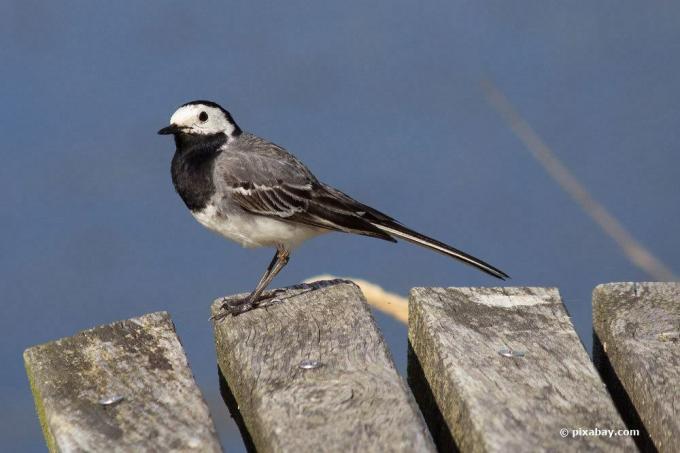
Tip: To protect the wagtail from predators, the nest box should be hung on the wall as freely as possible.
Jackdaw (Corvus monedula)
Jackdaws like to breed in company. Therefore you should always offer several nesting boxes. For jackdaws that breed in buildings, the nesting aid should be attached behind openings to attics or on the outer facade. Make sure that no spotlight falls on the nesting boxes. Nesting aids for tree-breeding jackdaws should be hung on the edge of the forest. A free approach is important.
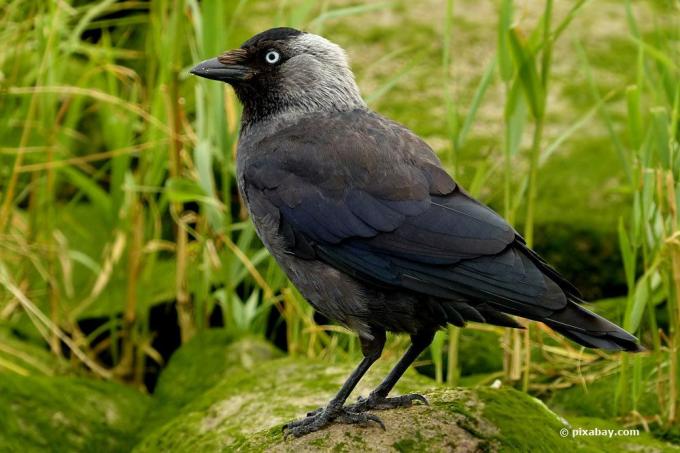
Tip: The distance between the nest boxes should be about half a meter.
Common Treecreeper (Certhia brachydactyla)
The treecreeper nest box is best attached to a tree with coarse bark. Because this is used by the birds to search for food. The ideal place for the nest box is described as follows.
- calm and protected
- at a height of two to three meters
- oriented to the east or south-east

Graycatcher (Muscicapa striata)
Graycatchers breed in half-cave boxes, which should be hung freely on a house wall to protect them from cats or martens. The ideal time to hang it up is early spring. The box should look like this.
- Hang out of the wind and rain and out of direct sunlight
- have the entrance hole facing south to east
- hang at least 2 meters above the ground

Birds from K to M
Nuthatch (Sitta europaea)
You can tell whether a nuthatch has used the nest box by the fact that the entrance hole has been sealed with clay and earth. A nesting aid with the following properties is ideal for the nuthatch.
- is protected from rain, wind and blazing sun
- hangs at least 2 meters above the ground
- has an entrance opening to the south to the east

Common Swift (Apus apus)
Since swifts belong to the colony breeders, you should hang up at least 3 to 4 nesting boxes. In addition, common swifts are extremely faithful to their brood location, which is why you should offer the nesting aid for years. The boxes are hung at great heights with free approach and departure options and should be protected from rain, wind and blazing sun.

Titmouse (Paridae)
Tits are very happy to accept nesting aids. Ideally, the nest box has the following properties.
- protected from rain, wind and blazing sun
- Mounted at a height of at least 2 meters above the ground
- the entrance hole should point south to east
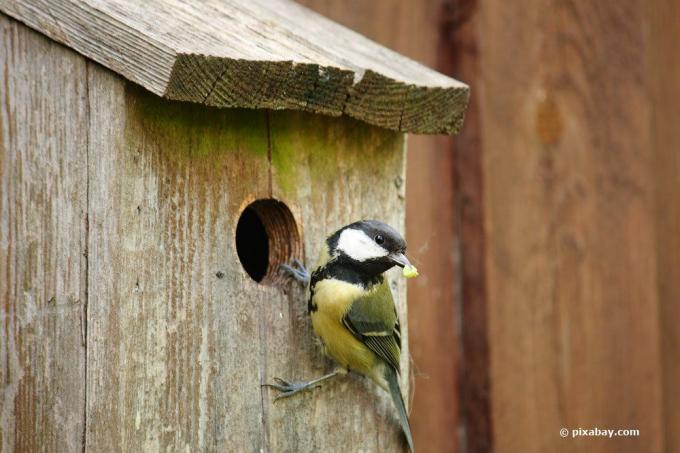
Birds from R to S
European robin (Erithacus rubecula)
Robins prefer half-cave boxes as a nesting aid. The niche opening should face south to east. In addition, the box should have these properties.
- be protected from wind, rain and blazing sun
- Hang at a height of at least 2 meters
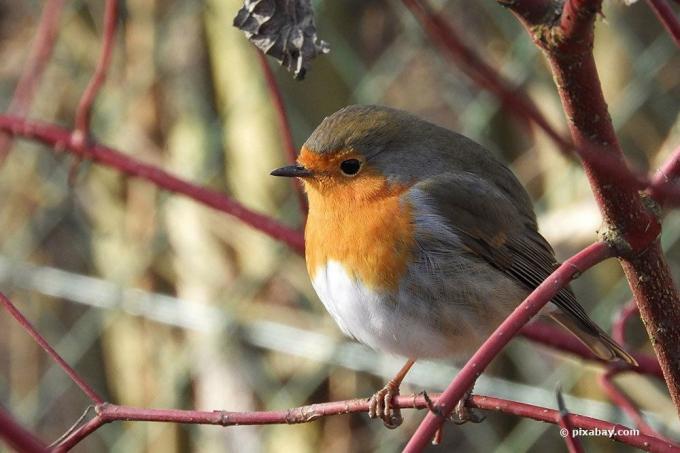
Tip: You can hang up the nest box as early as autumn.
Redstart (Phoenicurus)
The nesting box for the redstart and redstart should be hung in the treetop. If this is not possible, the minimum distance to the floor should be 2 meters. The box itself should be protected from wind, rain and blazing sun. The entrance should point south to east.

Tip: As a migratory bird, the redstart is happy about an empty nest box from April to the beginning of May.
Woodpecker (Picidae)
Nest boxes for woodpeckers are attached to the tree. The entrance hole must be on the leeward side. The minimum height for installation is 2 meters, ideally 3 meters.

Tip: Protect the nesting aid from cats and other nest robbers.
Sparrows (Passeridae)
House sparrows and tree sparrows are sociable birds and breed in loose colonies. Since the sparrow breeds up to four times from mid-April, you should only clean the nest box in autumn. The ideal location for the nesting aids is as follows.
- protected from wind, rain and blazing sun
- at least 2 meters above the ground
- Direction of the entrance hole: south to east

Tip: Offer the birds a "sparrow row house" as a nesting aid.
Star (Sturnus vulgaris)
The minimum height for hanging a starling box is 4 meters. Since starlings are a sociable species of bird, you should always have several nesting boxes. The entrance hole points south to east. Protect the nesting aid from blazing sun, wind and rain.
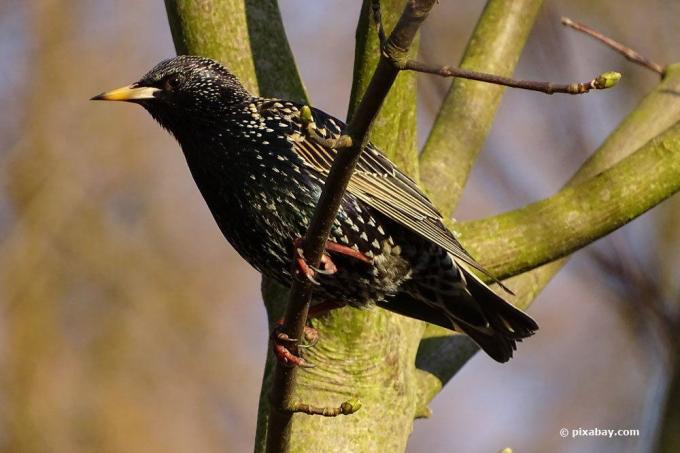
Tip: Although starlings like to sit on a perch in front of the nest, you should avoid this, as it makes access easier for nest predators.
Little Owl (Athene noctua)
Since the little owl box has a length of up to 90 centimeters, it is attached to a horizontal branch of a tree, inclined slightly backwards. The suspension height is 3 to 5 meters. In addition, an undisturbed, shady place should be chosen for the box. The box is aligned to the south or Southeast.

Tip: Attach the little owl box in such a way that the young birds can step out of the box and quickly enter it again.
Birds from T to Z
Pied flycatcher (Ficedula hypoleuca)
The pied flycatcher prefers a cave breeder box as a nesting aid. This is attached at a height of at least 2 meters. It should be protected from rain, wind and blazing sun. The entrance hole points in a south to east direction.

Tip: Since the pied flycatcher does not come to our region to breed until mid-April, its reproduction can be promoted by specifically hanging up nesting boxes.
Kestrel (Falco tinnunculus)
Kestrel nest boxes can't hang high enough because kestrels like to have a good overview of their surroundings. Kestrels are extremely faithful to their breeding grounds, so you should offer them the nesting aid for several years.
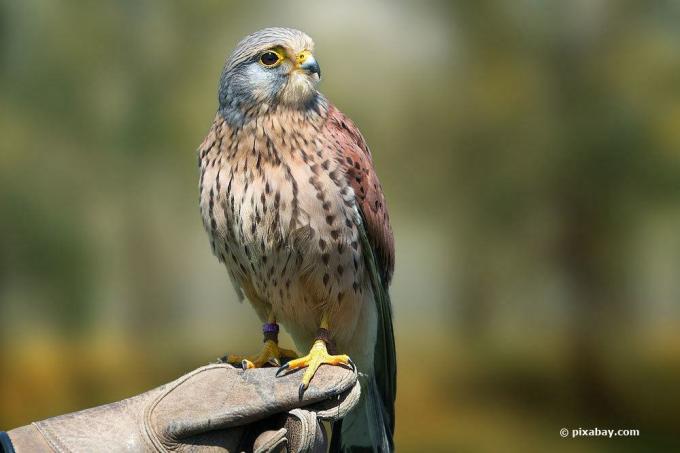
Tip: Surround the box with a board about 15 centimeters wide so that the young birds have some freedom of movement.
Tawny Owl (Strix aluco)
The tawny owl is a cave breeder and gladly accepts nesting aids. Optimal location for the nest box is as follows.
- at a height of 5 to 6 meters
- quiet and undisturbed
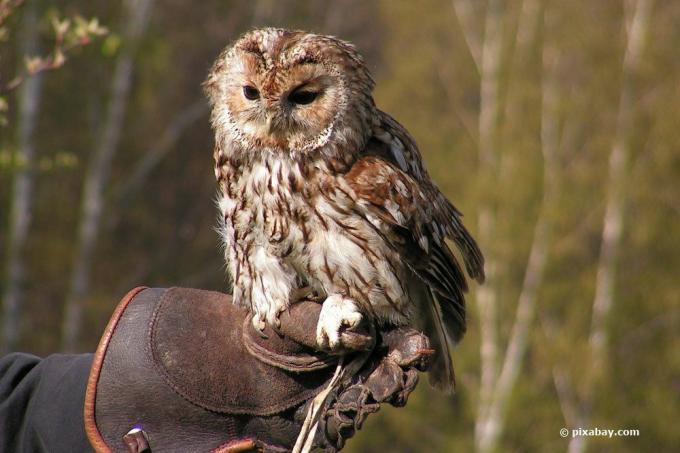
In addition, arrival and departure should be free. The entrance hole should point in an easterly direction.
Wren (Troglodytes troglodytes)
Nest boxes for the wren can be attached to trees, house or shed walls. The suspension height should be at least 2 meters. The entrance hole should point in an easterly direction. In addition, the box should not be exposed to the blazing sun.
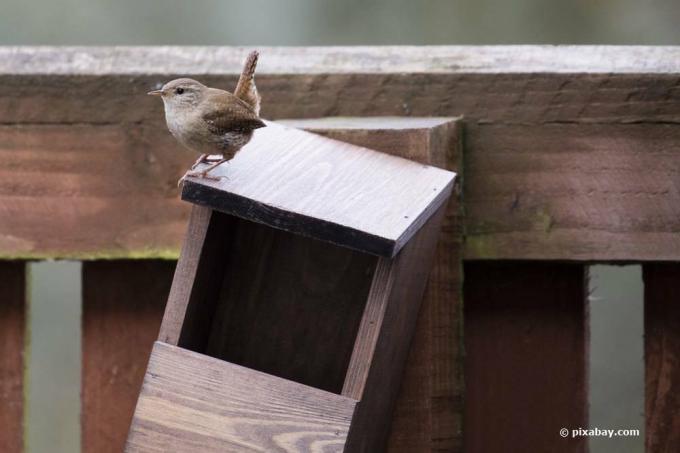
Tip: Do not hang the box in a fork of a branch, otherwise the birds will not become easy prey for predators.
